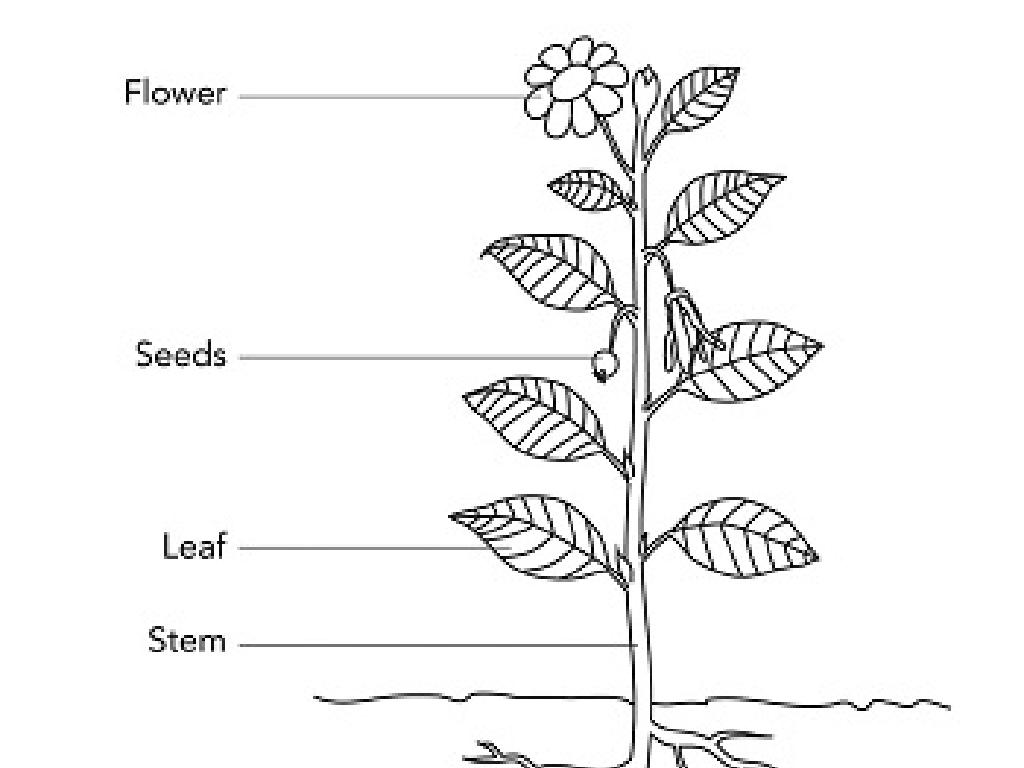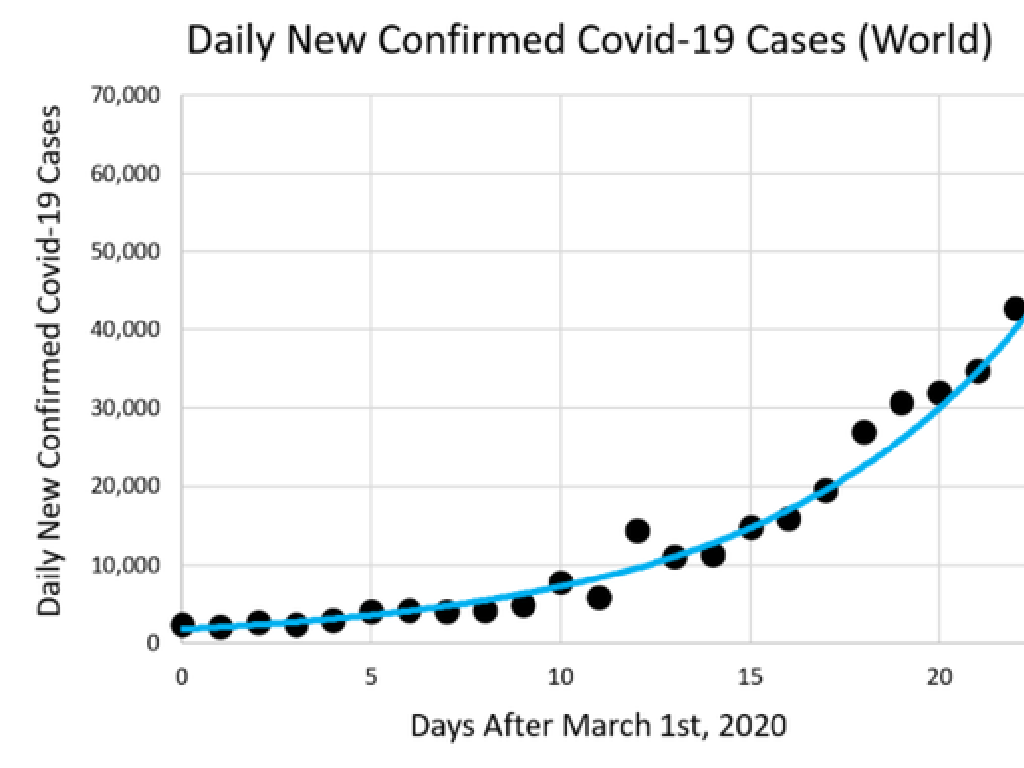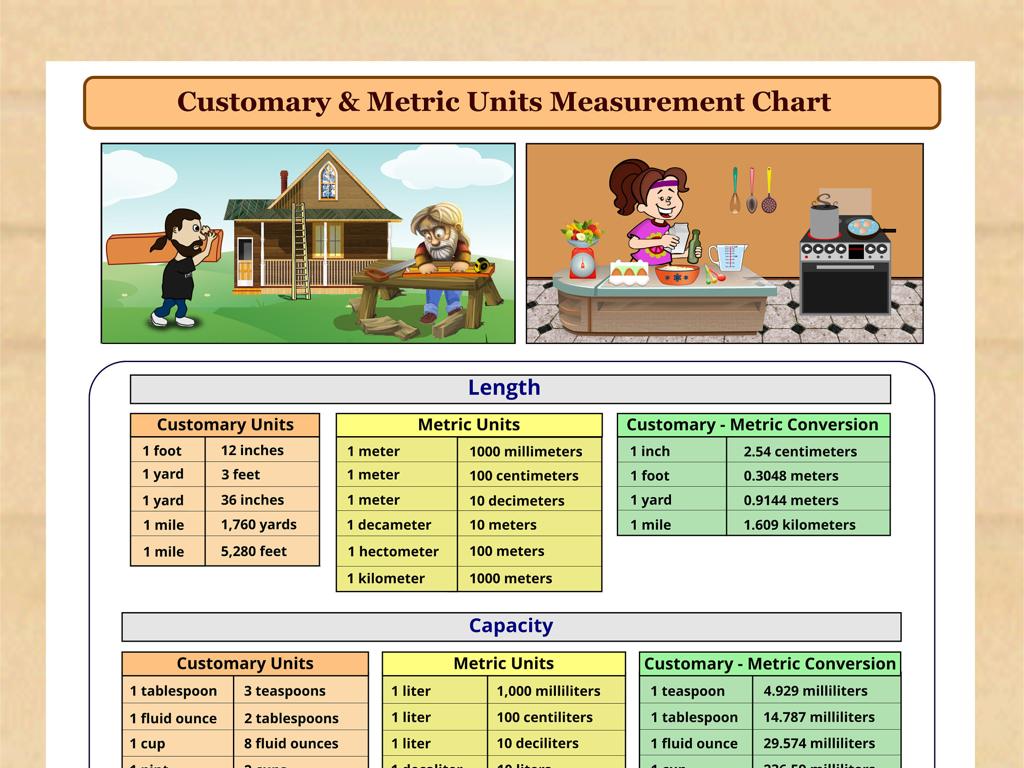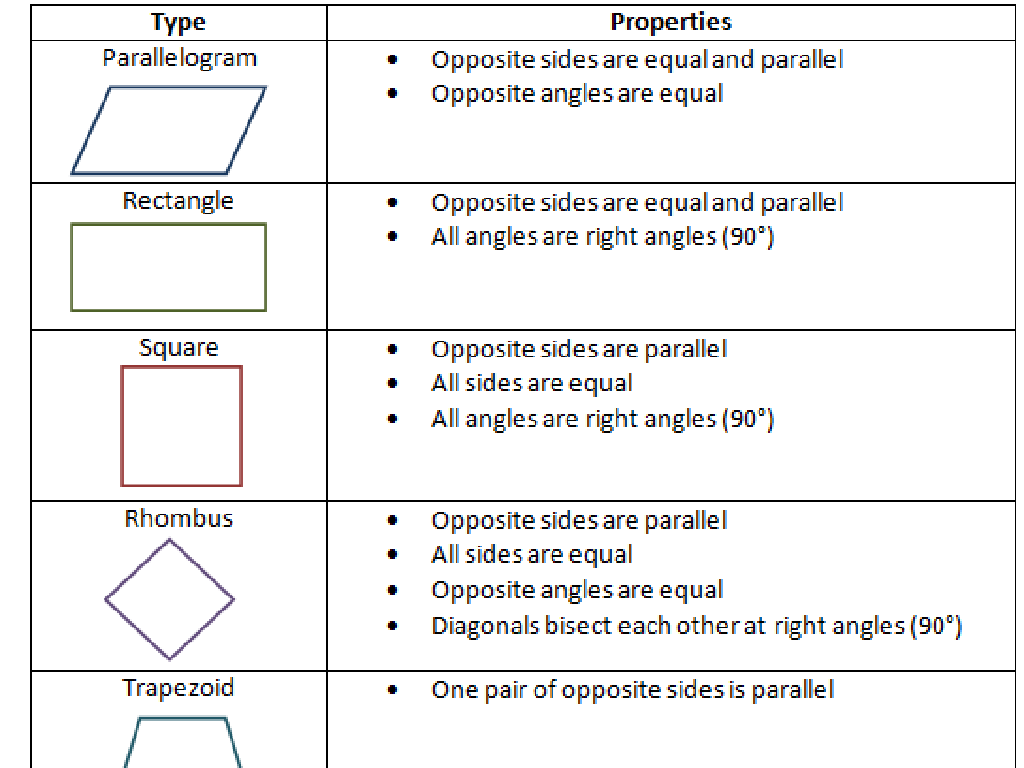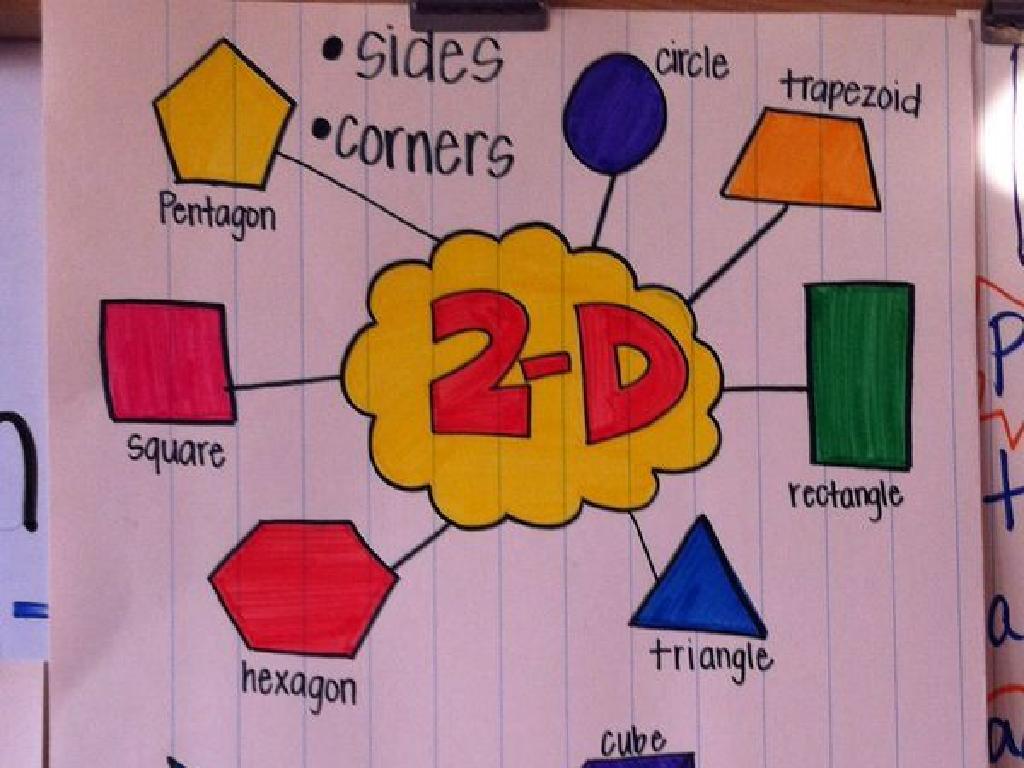Area And Perimeter: Word Problems
Subject: Math
Grade: Fourth grade
Topic: Area
Please LOG IN to download the presentation. Access is available to registered users only.
View More Content
Welcome to Area and Perimeter!
– Exploring the concept of area
– Area measures the space inside a 2D shape.
– Perimeter: the border around shapes
– Perimeter is the total length around a shape.
– Area and perimeter in daily life
– Used in building, farming, and crafting.
– Class activity: Find area and perimeter
|
This slide introduces the fundamental concepts of area and perimeter, which are essential in understanding two-dimensional spaces. Area is the measure of space within a shape, and it’s calculated in square units. Perimeter is the total distance around the edges of a shape. Highlight the importance of these concepts in real-world applications such as construction, agriculture, and arts and crafts. Engage the class with an activity where students find the area and perimeter of common objects in the classroom. This hands-on approach will help solidify their understanding. Provide guidance on how to calculate both and ensure to have examples that cater to different learning styles.
Exploring Area in Shapes
– Area: space inside a shape
– Measured in square units
– e.g., square inches, square feet
– Example: square’s area
– For a square with 4-inch sides: Area = 4 in x 4 in = 16 sq in
– Practice with word problems
|
This slide introduces the concept of area as the amount of space within the boundaries of a two-dimensional shape. It’s important to emphasize that area is measured in square units, which could be square inches, square feet, square meters, etc., depending on the context. Use the example of a square to illustrate how to calculate area by multiplying the length of the sides. For instance, a square with each side measuring 4 inches has an area of 16 square inches (4 in x 4 in). In the next class, we will delve into word problems that involve finding the area of different shapes, helping students apply this concept in practical scenarios.
Understanding Perimeter
– Perimeter: distance around a shape
– It’s like measuring the fence around a yard.
– Measured in linear units
– Units like inches, feet, or meters.
– Example: rectangle’s perimeter
– Add all sides: For a rectangle, 2 x (length + width).
– Practice with word problems
|
The perimeter is an important concept for students to grasp as it relates to the boundary of two-dimensional shapes. When explaining perimeter, use real-world examples such as the fence around a garden or the border of a playground to make it relatable. Emphasize that perimeter is always measured in linear units and that the units must be consistent. Use the example of a rectangle to show how to calculate perimeter by adding twice the length and twice the width. To reinforce learning, provide word problems that require students to apply the formula for perimeter in practical scenarios. Encourage students to draw the shapes and label the lengths to visualize the problem better.
Calculating Area of Rectangles
– Formula for area of rectangle
– Area = length x width, e.g., Area = 5 in x 3 in
– Practice with a 5×3 inch rectangle
– Use the formula: Area = 5 in x 3 in = 15 sq in
– Create rectangles with tiles
– Use square tiles to form different rectangles
– Calculate area of your rectangles
– Measure sides and apply formula to find area
|
This slide introduces the concept of calculating the area of a rectangle, which is a fundamental skill in geometry. Start by explaining the formula for the area of a rectangle (Area = length x width). Then, provide a specific example for the students to practice, such as a rectangle with dimensions of 5 inches by 3 inches. Next, engage the students with an interactive activity where they use square tiles to create their own rectangles on their desks or a shared space. Encourage them to measure the sides of their rectangles and apply the area formula to calculate the area. This hands-on activity will help solidify their understanding of the concept. The teacher’s notes should include instructions for the interactive example, ensuring that each student has enough tiles and understands how to measure and calculate the area correctly. Additionally, prepare to offer guidance and answer questions as students work through the activity.
Calculating Perimeter
– Perimeter calculation methods
– Add up all sides of a shape to find its perimeter
– Practice: 6 inch x 2 inch rectangle
– Add 6 inch + 6 inch + 2 inch + 2 inch = 16 inches
– Group Activity: Measure classroom items
– Use rulers to measure objects, then calculate
– Understanding perimeter application
|
This slide introduces the concept of perimeter to the students. Begin by explaining that the perimeter is the total distance around the edges of a shape. Use simple shapes like rectangles and squares as examples. For the practice problem, guide the students to add the lengths of all sides of the given rectangle. During the group activity, students will engage in measuring various objects around the classroom, such as books, desks, or windows, and calculate their perimeters. This hands-on activity will help solidify their understanding of how to apply the concept of perimeter in real-life situations. Provide clear instructions on how to measure and calculate, and ensure that each group discusses and agrees on their measurements and calculations.
Solving Area in Word Problems
– Understand area word problems
– Example: Calculate a garden’s area
– Area = length x width, so 8 ft x 5 ft = 40 sq ft
– Work in pairs to solve problems
– Pair up, read the problem, and find the area together
– Discuss solutions with the class
– Share your answer and how you got it
|
This slide introduces students to solving word problems involving the calculation of area. Start by explaining what area represents and how it can be found by multiplying the length by the width of a shape. Use the example of a garden to illustrate a practical application of area. Have students work in pairs to encourage collaboration and peer learning. After solving the problem, students should discuss their solutions and methods with the class, allowing them to learn from each other and reinforce their understanding. As a teacher, facilitate the discussion and ensure each pair understands the concept. Prepare additional similar problems for practice and offer guidance as needed.
Perimeter Word Problems
– Understanding perimeter problems
– Example: Picture frame dimensions
– A frame is 10 inches tall, 12 inches wide
– Calculate the frame’s perimeter
– Add all sides: 10+10+12+12 inches
– Class solves together
– We’ll work as a team to find the answer
|
This slide introduces students to solving word problems involving the perimeter. Begin by explaining that perimeter is the total distance around the edge of a shape. Use the example of a picture frame to illustrate how to calculate perimeter by adding the lengths of all sides. For the given example, guide the class through the process of adding the two lengths and two widths of the frame to find the total perimeter. Encourage students to participate and solve the problem together, fostering a collaborative learning environment. Prepare to assist with additional similar problems and ensure that each student understands the concept before moving on.
Let’s Practice Area and Perimeter!
– Class practice on word problems
– Individual problem-solving time
– Choose problems that challenge you
– Share your answers with the class
– Explain how you found your answers
– Discuss different solving methods
– Learn from each other’s strategies
|
This slide is designed to engage students in a collaborative and interactive learning session on area and perimeter word problems. Begin with a group practice where a word problem is solved together, demonstrating the steps involved. Then, allow students to work on problems individually, which will enable them to apply the concepts independently. Afterward, create a sharing environment where students can present their answers and the methods they used to arrive at them. This will foster a learning community where students can learn from each other and understand different approaches to problem-solving. As a teacher, facilitate the discussion, correct any misconceptions, and provide praise for creative and effective strategies. Prepare a set of diverse problems with varying difficulty to cater to all students.
Class Activity: Design Your Dream Playground
– Design a playground on grid paper
– Calculate area and perimeter of pieces
– Use length x width for area, add all sides for perimeter
– Present your playground design
– Discuss your calculations
– Explain how you got the numbers
|
This activity encourages students to apply their knowledge of area and perimeter to a fun and creative task. Provide each student with grid paper and ask them to design their own playground by drawing different pieces like slides, swings, and sandboxes. They should then calculate the area and perimeter of each piece. After completing their designs, students will present their playgrounds to the class, explaining their mathematical process. For the teacher: Prepare a list of possible playground pieces with varying complexity, offer assistance in calculation methods, and ensure each student understands the formulas for area and perimeter. Encourage creativity and praise their effort in both design and mathematics.
Wrapping Up: Area & Perimeter
– Recap: Area & Perimeter concepts
– Area is space inside a shape, perimeter is distance around it
– Practice is key to mastery
– Regular practice helps solidify understanding
– Homework: 10 word problems
– 5 problems each on area and perimeter to solve at home
– Bring questions to next class
|
As we conclude today’s lesson, it’s important to review the concepts of area and perimeter to ensure understanding. Emphasize to students that consistent practice is crucial for mastering these mathematical concepts. For homework, students are assigned a worksheet with 5 area and 5 perimeter word problems. This will help reinforce their skills and prepare them for more complex problems in the future. Encourage students to attempt all problems and bring any questions they have to the next class for clarification. Provide examples of how area and perimeter are used in real life to highlight the relevance of these concepts.

